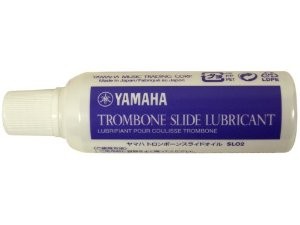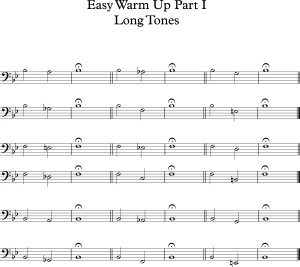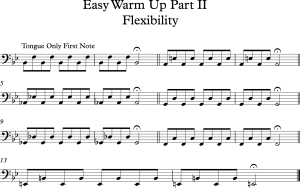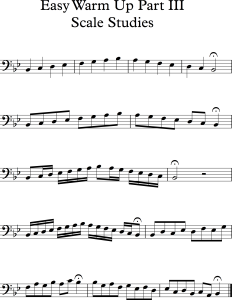Summer is an wonderful break from school that allows us to go back and study re-energized and ready to tackle a new year. It’s also very possible that many of you students (and you know who you are) have gone the better part of the summer without thinking about, much less playing your horn. But the time has come again to get your chops back in order, and here are some tips and advice on how to do that!
Posture
Let’s start with the basics. Sit up in your chair, don’t slouch. Place your feet flat on the floor at a natural distance apart. Don’t extend and cross them or place them underneath your chair. Take a minute and place your head in a nice and relaxed position. Did you know, the average weight of a human head is between 8-12 pounds, and that’s equivalent to carrying one bowling ball around on your head?!?* Find the natural resting point for the head straight up, without extending it forwards or back. From this position when you take your instrument and pull it up to your head you won’t be constricting the lungs and will be able to play most effectively. Do not bend down to your horn, as that will also produce tension.
Your Instrument
The slide is the most important part of your horn. A common problem I found with my friends in the section when I was in high school were dented and poorly maintained slides. Take your slide out of the case and look it over. Inspect it for dents that occurred through the previous school year. While the slide makes the trombone one of the most unique wind instruments the added length makes it an easy to bump the slide into objects. These dents impact the slides ability to Glide smoothly, making it harder to move and making music less enjoyable. If you find dents take it in to a local music store, or if your unsure where to go ask your band teacher for suggestions on where to take it. Don’t attempt self-repair jobs at home.
Once your slide is in good working order, is very important to maintain it using a good slide lubricant. There are, many options available, but what I see virtually every professional in Toronto use is Yamaha’s ‘Slide Lubricant.’

Following the directions listed on the bottle, your slide will be nice and smooth. It is handy to keep a small spray water bottle on hand. If the slide starts to stick spray it once or twice with water to get it gliding again.
There are many other products on the market to help trombonists keep their slides happy but for cost (the yamaha is cheap,$7.30 Canadian is printed on my current bottle) and ease of use Yamaha’s Slide Oil wins out!
The Warm Up
I sat down with a former teacher of mine to visit a short time ago, and she mentioned how I am still one of the few (if not the only) trombone student she had in class who ever warmed up. In an era of smartphones it’s understandable frustration that you can’t get right to the music, but not warming up for music is like not stretching before running a marathon. I knew someone a trumpet player who never warmed up, played many high notes and created many problems for himself. If he had taken the time to warm up properly he would have saved himself a lot of headache. Thankfully, a long involved warm up is usually not necessary, unless your working with a private teacher and preparing for auditions to a trombone studio after school. Check out the examples below for an easy 5 minute warm up that can be done easily at the start of any music class.
It’s broken into 3 distinct parts:
1. long tones, to work on breathing and tone quality – use a soft tongue attack, a ‘tah’ or ‘dah’ attack. Concentrate on keeping a steady airflow through the entire notes and making the fullest sound you can. Move your slide arm quickly between notes as the positions start to get further apart to avoid any unintentional glissandos between notes. These are some standard long tones taken from the great teacher Edward Remington.
2. lip flexibilities – these help train your embouchure on where the placement of notes are, help train yourself to move between notes, and help with learning certain jazz articulations. Play these slowly before you play them fast, making sure each notes slots (you hit it fully) before moving back down/up to the next. There are entire books of these patterns getting increasingly complicated, but here is a simple one to get you going.
3. Scales – look at the music you are working on in class – run through the major (and/or minor) scales of that piece. This helps prepare for class, and works on slide technique and ear training. Some easy patterns are included below in the Key of Bb. Apply the patterns to any other Key Centers that you’ll be playing in during the class.
In Summation;
Music Should Be Fun
Music class is an incredible experience. The ability to play a musical instrument changes the way the brain functions and improves results in improved aptitude in other subjects. My life changed from when my band teacher first taught me a Bb to afterwords. Through learning to Improvise I learned to tell stories through my instrument and gained confidence talking standing up in front of large groups of people. If I could offer a few words of advice on your next year of school:
A. Don’t make noise when your Teacher is talking, or working with other instruments.
B. Practice your music! Don’t be that one in the section who does not know their part.
C. Never hit the saxophones in their back with your slide, unless their ‘really’ asking for it. 😉
Further Reading
The breathing book (Versions for Tenor and Bass Trombone) – David Vinins
Arban’s Famous Method For Trombone – Carl Fischer Publishing
Melodius Etudes For Trombone – Joannes Rochut – Carl Fischer Publishing
* Full Disclosure, this fun fact on bowling balls is taken from ‘The Breathing Book’ Listed Above



